Fence staples are a fundamental component in the construction and maintenance of wire fencing systems. Serving as small yet critical anchors, these metal fasteners secure wire fencing to wooden posts, ensuring the structure remains intact under various environmental conditions. The process of how to install fence staples properly is paramount for establishing a secure and durable boundary that will stand the test of time.
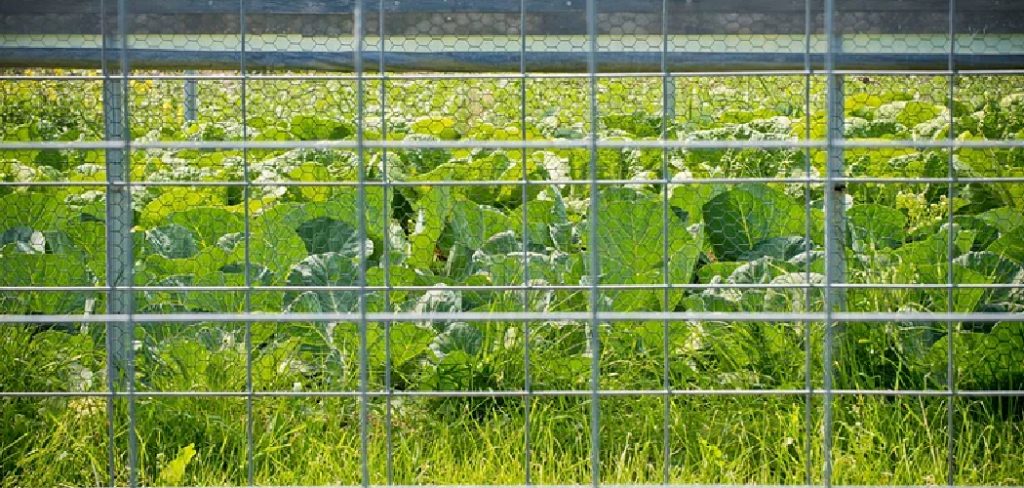
This guide aims to shed light on the efficient and correct methods of staple installation, highlighting the importance of both technique and the use of appropriate materials. Whether you’re a seasoned professional or a DIY enthusiast, understanding the nuances of staple installation can make a significant difference in the longevity and strength of your fence.
Understanding Different Fence Staples
A. Material Options
Fence staples are primarily made from two types of material: galvanized steel and stainless steel. Galvanized steel staples are coated with a layer of zinc to protect against corrosion, making them suitable for most outdoor conditions and providing a long lifespan.
Stainless steel staples, while generally more expensive, offer superior resistance to rust and are ideal for use in coastal areas or environments where the staples are exposed to harsher, more corrosive elements. The choice between these materials largely depends on the specific environmental conditions and the desired durability of the fence.
B. Staple Sizes and Applications
The size of the fence staple is critical and should be chosen based on the gauge of the wire and the type of fence being installed. Smaller staples are typically used for thinner gauge wire, ensuring a secure fit without damaging the wire. Larger staples with a wider body are preferred to accommodate the thicker gauge wires and provide enhanced holding power for heavier and more robust fencing materials, such as chain links or woven wire.
Understanding the specific requirements of the fencing material and selecting the appropriate staple size are key steps in ensuring the durability and effectiveness of the fence installation.
Tools and Materials
When installing fence staples, having the right tools and materials at hand is crucial for a successful and efficient job. Essential items include:
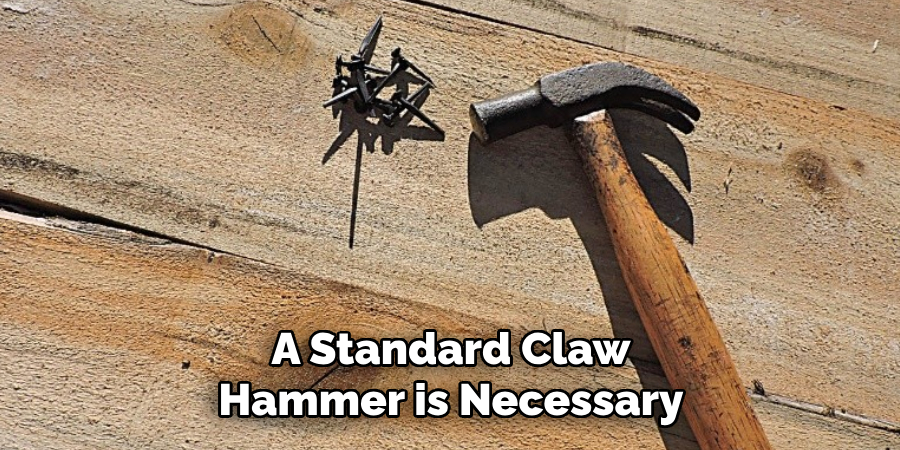
- Fence Staples: Based on the environmental conditions and the type of fence, choose the correct size and material (galvanized steel or stainless steel).
- Hammer: A standard claw hammer is necessary for most staple installations, providing precision and control.
- Staple Gun: An optional tool, staple guns can greatly speed up the installation process, especially for large projects.
- Work Gloves: To protect your hands from cuts and ensure a firm grip.
- Safety Glasses: Essential for protecting your eyes from flying debris or metal fragments during the installation process.
Together, these tools and materials will equip you for a smooth and effective fence staple installation.
Preparing the Fence and Staples
Before the actual installation of fence staples begins, thorough preparation of both the fence and the staples themselves is imperative to guarantee a smooth and efficient process.
A. Inspecting the Fence
Checking the fence line for debris or obstacles is a crucial first step in the preparation process. Objects such as rocks, branches, or uneven terrain can impede staple placement. A clear fence line ensures that staples can be securely and accurately driven into the fence posts without any hindrances.
B. Inspecting the Staples
Before installation, inspecting the staples to ensure they are in perfect condition is important. To maintain their structural integrity and effectiveness, Staples should be undamaged and free from rust, particularly for galvanized options. Damaged or rusty staples could lead to weak fence installations or necessitate premature repairs.
C. Wearing Safety Gear
The importance of wearing appropriate safety gear cannot be overstated. Work gloves are essential to protect hands from cuts or injuries during the installation process, while safety glasses are crucial to prevent eye injuries from flying debris or metal fragments. Together, these safety measures help mitigate the risk of accidents.
How to Install Fence Staples: Installing Fence Staples with a Hammer
A. Positioning the Staple
To begin the installation of a fence staple using a hammer, hold the staple with the pointed ends facing towards the wooden fence post and the open ends facing the wire that you’re securing. Position the staple on the wire at the desired location on the fence post, ensuring that there is proper spacing between it and any adjacent staples.
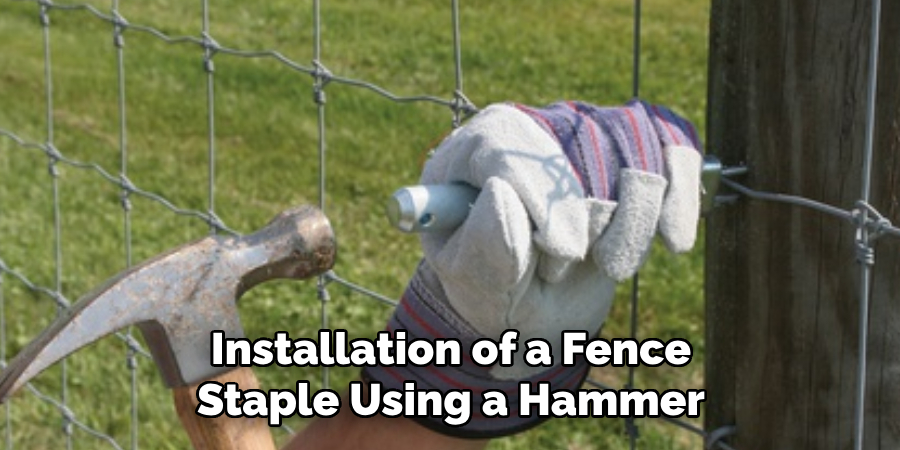
This initial positioning is crucial in providing the staple a firm anchor on both the wire and the post, setting the stage for a secure fastening that optimally supports the fence’s structure.
B. Driving the Staple
Using a hammer to install the staple involves carefully driving the pointed end through the wire and deep into the wooden fence post. It’s essential to do this in a straight and controlled manner to prevent the staple from bending or damaging the wire.
To achieve this, align the hammer accurately over the staple and apply consistent force. It may be helpful to angle the staple slightly towards the post as you drive it in. This inward angle increases the staple’s holding power by providing a more secure grip on the wood.
The angle also discourages the staple from losing under tension or movement from the wire. While driving the staple, it’s vital to remain vigilant and adjust the force applied according to the resistance offered by the wood. This ensures the staple is inserted firmly without causing unnecessary damage to the post or the wire, maintaining the integrity of the fence installation.
C. Securing the Staple
Once the pointed end of the staple is adequately driven into the post, focus on securing the staple by hammering down its flat end. This should be done until the staple is flush with the surface of the post or slightly bent over the wire. This provides added security, ensuring that the wire is snugly held against the post.
Care must be taken to avoid over-driving the staple, as this could potentially damage the wire or compromise the wood’s integrity. Properly secured staples are key to a fence that remains tight and functional over time.
D. Maintaining Consistent Spacing
An important aspect of installing fence staples correctly is maintaining consistent and recommended spacing between each staple. Uniform spacing ensures an even distribution of tension along the wire, which contributes to the overall strength and durability of the fence. This consistency also lends a professional appearance to the installation, signaling meticulous attention to detail.
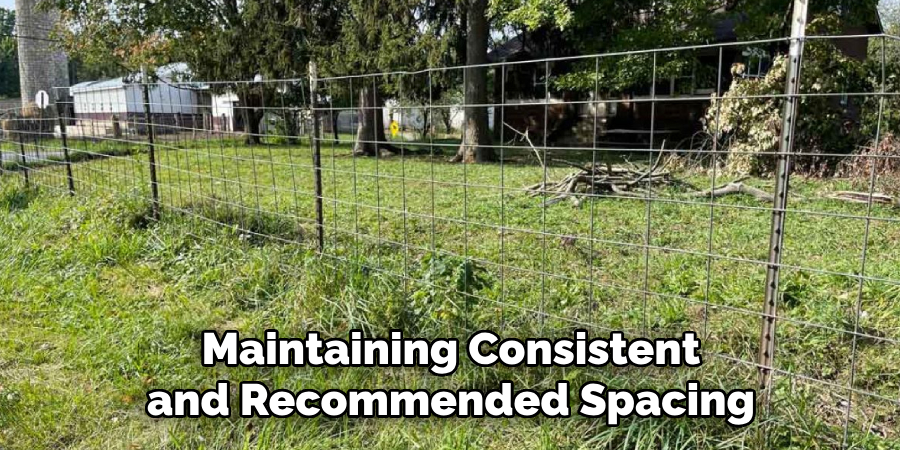
Typically, the spacing may vary depending on the type of fence and wire being used, so it’s important to refer to specific guidelines or manufacturer recommendations. Proper spacing not only enhances the fence’s structural integrity but also its ability to withstand environmental stressors and pressures over time.
How to Install Fence Staples: Using a Staple Gun
For those looking to speed up their fence staple installation process, opting for a staple gun can be an effective alternative. However, it’s crucial to select a staple gun that is compatible with the size and type of fence staples you’re planning to use. There are various models available on the market, designed for different purposes.
For fence installation, it’s recommended to choose a heavy-duty staple gun that can accommodate the specific dimensions and material of your fence staples, whether they are galvanized steel or stainless steel. This compatibility ensures that the staples are driven correctly and securely without causing damage to the wire or posts.
It’s also worth considering the ergonomics of the staple gun to ensure comfortable and efficient use over prolonged periods.
A. Loading the Staple Gun
Loading the staple gun correctly is essential for efficient operation. Always start by referring to the manufacturer’s instructions, which will guide you through the process of inserting the staples into the magazine. Ensure the staples are the correct size for your gun and are positioned correctly to avoid jams and ensure seamless operation.
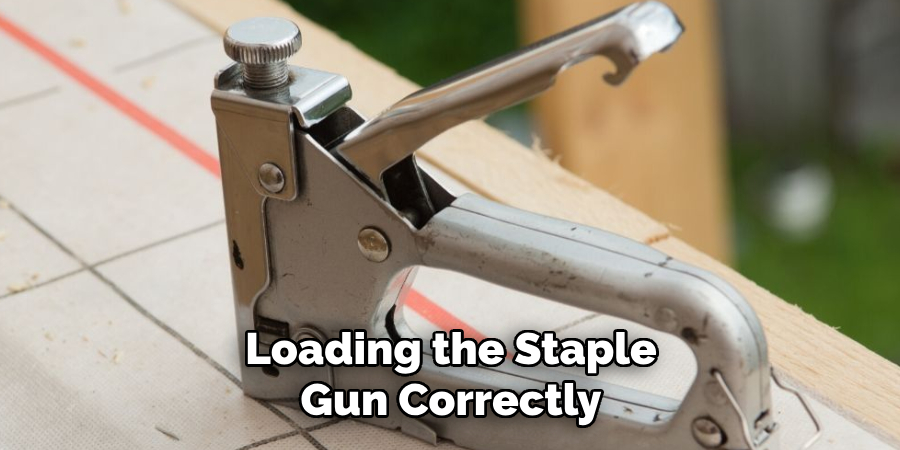
B. Operating the Staple Gun
Positioning the staple gun on the wire and post is similar to the hammer technique. Aim for the staple gun to align with the desired location on the post and wire, ensuring proper spacing from any adjacent staples. Then, holding the gun steady, squeeze the trigger to drive the staple into the post. This method is faster and requires less physical effort than hammering, making it a preferred choice for larger projects.
Additional Considerations and Techniques
A. Securing Corners
Corner posts bear significant tension and require added reinforcement to sustain the structure of the fence over time. Utilizing additional fence staples or specialized corner braces can ensure these critical junctions remain tight and secure. When installing staples at corners, it’s advisable to increase their density compared to straight sections.
Corner braces, made from metal or heavy-duty plastic, provide an alternative method for reinforcing these areas, complementing the structural integrity provided by the staples and accommodating the additional stress that corners typically endure.
B. Overlapping Fence Wire
For a continuous and secure fence line, overlap the ends of wire fencing by at least a few inches at the joints. This overlap ensures that tension is distributed evenly across the joint, reducing the likelihood of breaks or gaps forming over time.
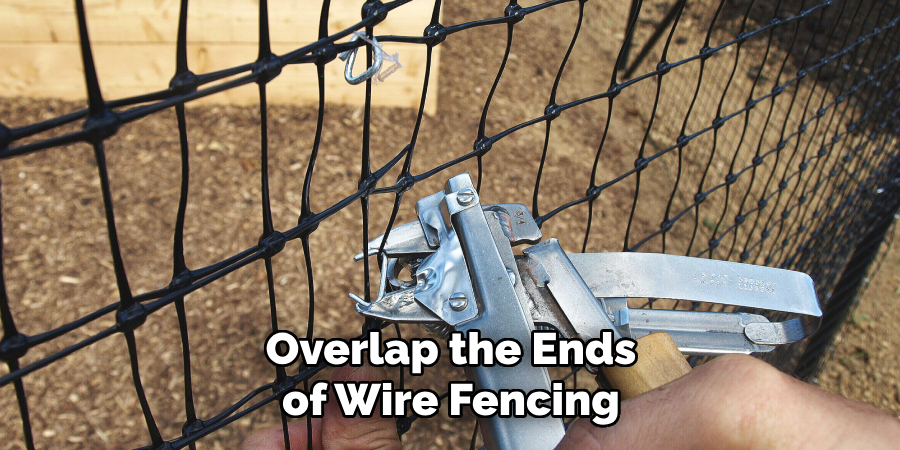
Secure this overlapped section thoroughly with fence staples, placing them at various points along the overlap to prevent sagging or separation. This method significantly enhances the durability of the fence, promoting a seamless and resilient boundary.
C. Repairing Loose Staples
Loose staples can compromise the stability and integrity of a fence, necessitating prompt attention. To repair a loose staple, use a pry bar or a similar tool to carefully remove it from the post, taking care not to damage the wire or wood in the process.
Once removed, inspect the area for any damage that could undermine the hold of a new staple. If the post is intact, replace the old staple with a new one in the same location, ensuring it’s driven securely into the wood. This maintenance step is crucial for preserving the longevity and effectiveness of the fence.
D. Installing Staples on Uneven Posts
Dealing with uneven posts presents a unique challenge when installing fence staples. In cases where the post surface is irregular, consider using staples at a slight angle to ensure better penetration and grip in the wood. Alternatively, pre-drilling small pilot holes in the post can facilitate easier and more accurate staple placement.

Due to the uneven surface, this technique reduces the risk of the staple bending or not seating properly in the post. Both methods contribute to creating a stable and secure attachment for the fencing wire, even on the most challenging of posts.
Working with Different Fence Materials
A. Chain Link Fence
When installing a chain link fence, it’s important to use staples specifically designed for this purpose. These staples usually have a curved body that perfectly grips the wire mesh, providing a secure hold that regular staples cannot achieve.
The curvature allows for a snug fit around the chain link fence’s fabric, ensuring that the mesh stays firmly attached to the fence posts even under stress from wind or physical pressure. Selecting the right staple for chain link fencing is critical for maintaining the integrity and longevity of the fence.
B. Woven Wire Fence
For woven wire fences, which are commonly used in agricultural settings for containing livestock, staples with a wider body are preferable. These larger staples are capable of accommodating the thicker gauge wires used in these fences, providing a stronghold that prevents sagging and separation.
The design of these staples ensures they can grasp multiple strands of the woven wire, enhancing the overall stability of the fence. Proper installation of these staples is vital to ensure the woven wire fence withstands environmental challenges and the physical demands of the animals it encloses.
C. Wood Slat Fences
In the case of wood slat fences, staples are not typically the go-to choice for securing the slats to fence posts. Given the need for a stronger and more permanent hold, screws or nails are generally recommended.
These fasteners provide the necessary strength to keep wood slats in place, especially in regions prone to strong winds or where the fence may be subjected to frequent pressure. Although staples may be used for temporary or supplementary fixation, for lasting durability and to maintain the aesthetic appeal of wood slat fences, screws or nails are preferred.
Safety Precautions
A. Eye Protection
Always wear safety glasses or protective goggles when working with fence staples, regardless of the project’s size. Flying debris, metal fragments, or even a misfired staple can cause serious eye injuries. Eye protection is a simple yet critical measure to guard against unforeseen accidents.
B. Hand Protection
Work gloves are an essential part of your safety gear when installing fence staples. They not only protect your hands from cuts or punctures caused by sharp edges but also help prevent blisters during prolonged use of tools. Ensure your gloves fit properly and offer sufficient dexterity for handling both staples and tools effectively.
C. Mind Your Fingers
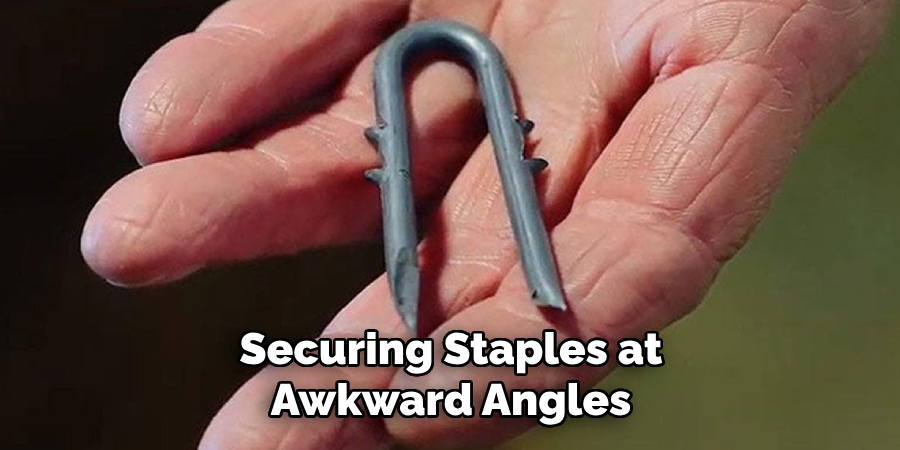
Always be mindful of the placement of your fingers when using a hammer or staple gun. Keep them well away from the point of impact to avoid accidental injuries. This is especially crucial when working in tight spaces or when securing staples at awkward angles.
D. Using the Right Tool
Ensure that the hammer or staple gun you’re using is in good working condition and is appropriate for the size and type of staples you’re working with. A tool that is too powerful can cause overdriving, while one that’s not powerful enough might not secure the staple properly, both scenarios posing potential safety risks.
Tips for a Professional Finish
A. Maintaining Straight Lines
To guarantee your fence wire aligns perfectly straight before stapling, utilize a taut string or a level as a guide. This simple yet effective method ensures your fence not only looks professional but also serves its purpose efficiently.
B. Spacing Consistency
Maintaining consistent spacing between staples is key to achieving a visually appealing and structurally sound fence. Consistent spacing prevents sagging and ensures even tension distribution across the fence line, contributing to the enclosure’s overall durability.
C. Trimming Excess Wire
After the installation, it’s common to have excess wire at the end of your fence line. Using a pair of reliable wire cutters, trim these overhanging pieces close to the staple to maintain a neat finish and prevent potential injury from sharp ends.
D. Cleaning Up
Always conclude your fencing project by picking up any leftover staples, debris, and tools from the work area. A clean work site not only looks professional but also minimizes the risk of injuries, ensuring a safe environment post-installation.
Conclusion
The process of how to install fence staples, whether using a hammer or a staple gun, encompasses attentiveness to detail and the right techniques to ensure a secure attachment to fence posts. The initial step involves selecting the appropriate type and size of staples, a decision crucial to the success of the installation. Curved body staples are ideal for chain link fences, while wider staples best serve woven wire fences.
Although not commonly used for wood slat fences, where screws or nails are preferable, staples must still be chosen with care for other materials. Proper installation techniques, such as maintaining straight lines with a taut string or level and ensuring even spacing between staples, contribute significantly to the overall durability and appearance of the fence.
Additionally, safety precautions, including the use of protective eyewear and gloves, are paramount to avoid injuries during the process. Ultimately, understanding how to install fence staples correctly ensures a secure, long-lasting enclosure and achieves a professional look that enhances the property’s overall aesthetics.

